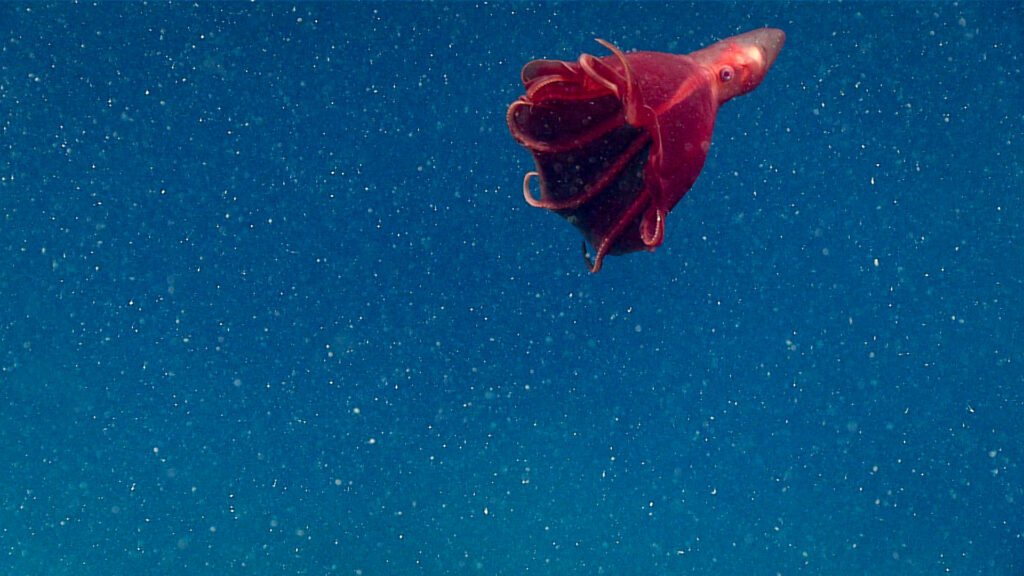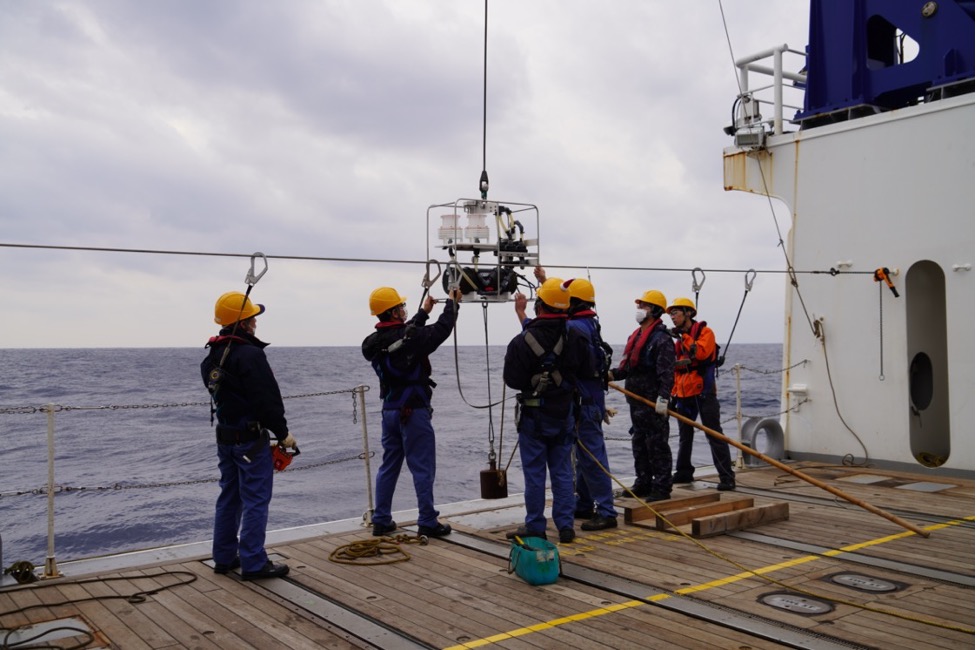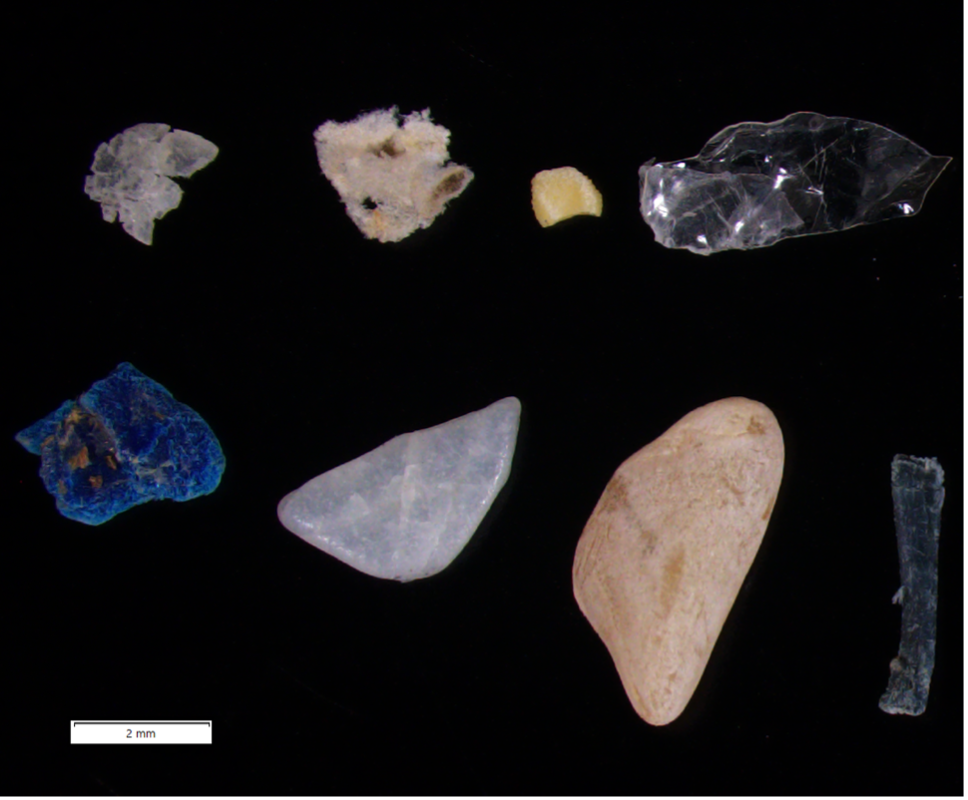by Erin Minor
As plastic pollution spreads to every corner of the world, concerns are rising about microplastics, smaller pieces of plastic even more difficult to see and track. Scientists estimate that microplastics (particles smaller than 5 millimeters) make up 92% of the plastic particles on the ocean surface. But what about below the surface?
Until recently, understanding microplastics below the ocean surface has been a glaring gap in marine pollution research. Most sampling happens at the ocean surface. However, complex ocean currents mean that a surface-level sample doesn’t necessarily represent the ocean as a whole.
In a new study coauthored by the Smithsonian, an international team compiled data from deep-water samples around the world to start filling in the blanks. Here are four things we know better now about microplastics underwater.
1) Even light microplastics can sink.
Some microplastics float and others don’t. It depends on the type of plastic they came from. But this study found that large amounts of microplastics are distributed at all ocean depths around the globe, said lead author Zhao Shiye, a researcher at the Japan Agency for Marine Earth Science and Technology.
A few things could explain this. The first relies on ocean physics. Different water masses have different densities: Cold water is denser than warm water, and salt water is denser than fresh water. That’s why it’s much easier to float in the very salty Dead Sea than a public swimming pool. Microplastics follow the same rules.
“Microplastics are so small they are just barely between being buoyant or non-buoyant in normal seawater. So when the density of the water changes, a piece of microplastic that might have been sinking suddenly slows down dramatically hanging around at a certain depth,” said coauthor Martin Thiel, a marine biologist at the Smithsonian Environmental Research Center (SERC). “That causes microplastics to accumulate at the water mass with the lower density.”
But ocean life also could affect the distribution of microplastics in the deep. Animals in the ocean consume microplastics with their food. They then excrete those microplastics through fecal pellets, which are denser and more compact and therefore sink rapidly to the ocean floor. These pellets disintegrate and can shed microplastics throughout the water column on the way down.
2) They’re changing how the ocean stores carbon.

The ocean is a massive carbon sink. It absorbs 30% of the carbon dioxide released into the atmosphere, largely thanks to microscopic phytoplankton and other bacteria. When these tiny organisms die, they clump together with other organic byproducts and fall to the ocean floor as “marine snow.”
But today, microplastics are getting caught up in this marine snow. This changes its buoyancy, slows down its sinking, and overall reduces the efficiency of the ocean’s carbon cycle.
“These disruptions [in the ocean’s carbon cycle] collectively diminish the ocean’s capacity to sequester atmospheric CO₂, with significant implications for climate regulation,” said Zhao.
3) They’re throwing off carbon dating.
To understand how carbon cycles through the ocean, scientists measure carbon-14 (14C), a radioactive isotope that scientists use for all sorts of dating. Knowing the age of a carbon sample can tell scientists where it came from and reveal how deep water in the ocean circulates.
However, plastic is made from fossil fuels, which also have carbon. But the carbon in fossil fuels is so old, it no longer has any 14C. When microplastics mix with other marine carbon, they can change the ratio of radioactive to non-radioactive carbon and alter scientists’ estimation of its age.
“[Manmade] plastics mixed with natural organic carbon samples lower 14C ratios, falsely suggesting older carbon sources,” said Zhao.
Scientists found that this ratio is increasingly changed with water depth—making carbon samples from deeper water look older than they really are.
4) They may get even smaller than “microplastics.”

Microplastics in the ocean largely come from pieces broken off larger pieces of plastic. This means these pieces will likely continue breaking down, making them even more difficult to measure and keep track of.
“At some point, they become so small that it is very hard for us to measure them,” Thiel said. “At that point we are not talking about microplastics, but nanoplastics.”
Nanoplastics—plastic fragments so small they are invisible to the naked eye—have recently begun attracting more attention. Some evidence suggests that nanoplastics are even more prevalent in the ocean than microplastics. This raises a new set of questions—about whether nanoplastics might behave differently in deeper waters, where they will go and how they could impact the environment.
It’s a stark picture, but it also sheds light on a path forward. This new study can help scientists make better predictions about where microplastics might be. Current models are good at predicting ocean currents and how they might distribute microplastics. But they often don’t factor in the roles plants and animals play. This missing information can create gaps between some predictions and the actual observed prevalence of microplastics throughout the water column.
There’s still a lot left to understand about the impacts microplastics have on the ocean and all of its important systems. But this study is the first step to illuminate answers to questions that scientists have been asking about microplastics.
“So far everyone has literally just scraped at the surface,” Thiel said. “This study is our first glance into the big black box of microplastics in the deep ocean.”
Dive Deeper
3 Animals Helping Us Track Plastic Pollution in the Ocean
Do We Live in the Plasticene? 12 Words to Know for the Age of Plastics.
‘Ocean Travelers’ Tracks the Mysterious Voyages of Life on Marine Trash


